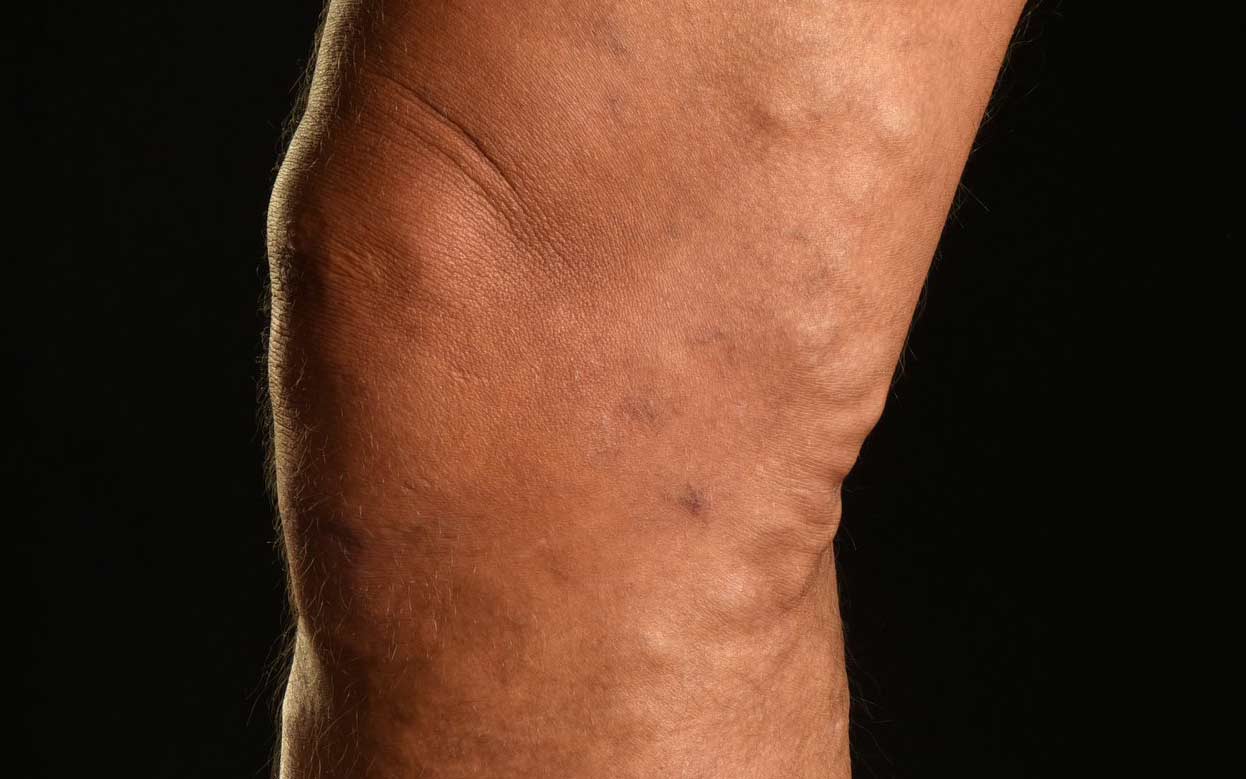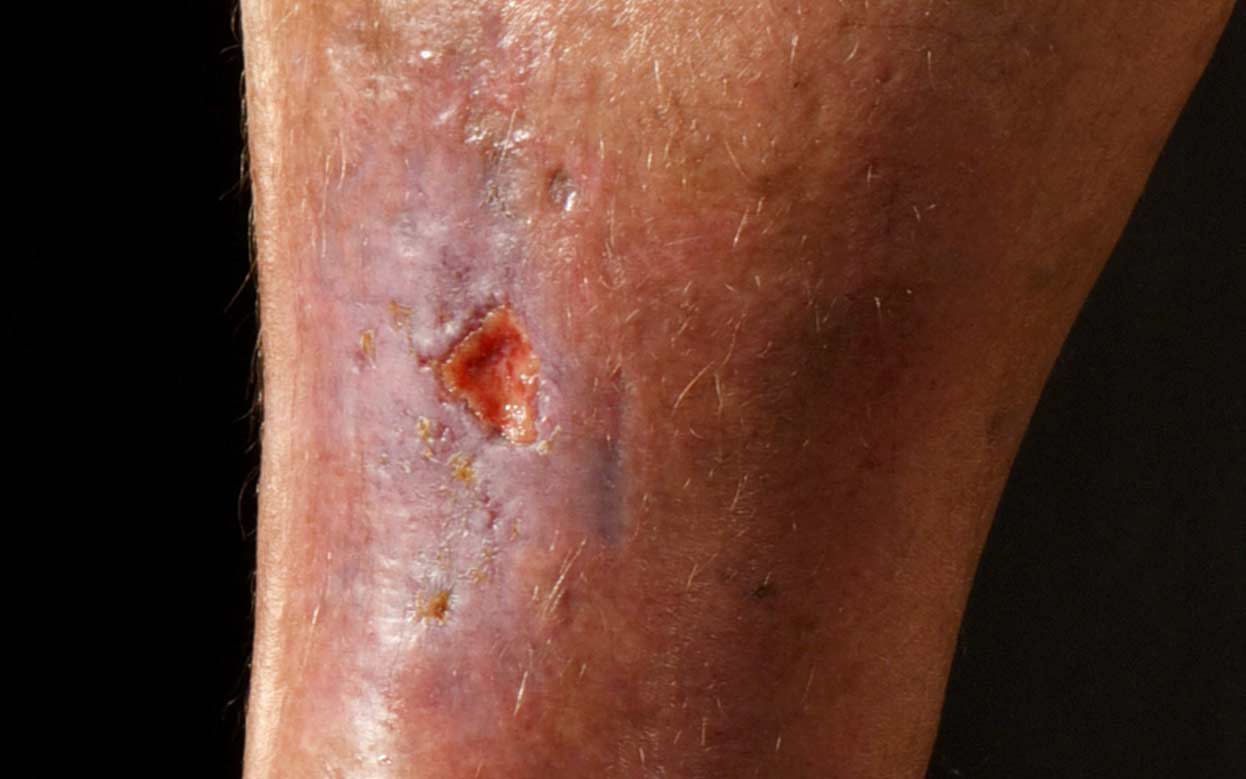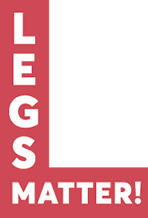Why legs matter
Our legs and feet do a lot for us but often they don’t get the attention they deserve. It’s really important that we keep an eye on our lower legs and feet. Even the smallest change to the way they look or feel can be a sign of something more serious.
Download our A4 2 page printable patient leaflet as a pdf
– Knees to toes: what you need to know (PDF download 566kb)

Download our 8pp patient booklet as a pdf
– Knees to toes: what you need to know (PDF download 383kb)
The little things to look out for
Get to know what’s normal for you when it comes to your legs and feet. Here are some things to look out for:
- Swelling
- Sores, ulcers or wounds that are not healing
- Tired, throbbing and painful legs
- Varicose veins
- Dry, itchy and scaly skin
- Reddish brown staining above the ankle
- Cramp or pain after walking
- Hot, inflamed and tender skin
If you notice any of these, make sure you get your legs and feet checked out at your GP practice.



More than legs and feet
It’s not just your legs and feet that can be affected by leg and foot conditions. They can have a big impact on your everyday life. Something as simple as a small knock can turn into a non-healing wound or ulcer that can be very painful and affects your ability to do things like go to work or carry out everyday tasks. They can also have a big impact on your mental health and wellbeing. The good news is that most leg and foot problems can get better if they are seen and treated early.
Top tips
There are lots of little things we can do to keep our legs and feet healthy. Here are are few ideas to get you started.
Think skin
Your skin’s a good indicator of your leg and foot health. Keeping your skin in good condition can also help soothe or prevent some legs conditions.
- Moisturise your legs with an unscented moisturiser every day.
- Check your skin for breaks, cracks and swelling.
- If broken areas are not healing or you notice any changes in the colour or texture of your skin, visit your GP surgery for advice.
Get moving
Move your legs and feet regularly in any way that feels good for you – it’s great for circulation and reducing swelling.
- Try to walk for about 30 minutes at least three times a week.
- If walking is difficult, just move your feet around in circles, then up and down – you can do this sitting down.
- Avoid standing for a long time.
Keep healthy
There are two big things we can do, not just for our leg and foot health but for our overall health and wellbeing too.
- Maintain a healthy weight – carrying extra weight increases the chances of developing problems in your legs and feet and makes swelling worse. Aim to eat a well-balanced diet and get enough exercise.
- Stop smoking – smoking decreases the blood flow to the legs and feet, and makes healing more difficult. Stopping will help to keep your legs healthy.
Consider compression
If you’re prone to swelling in your legs and feet or you have problems with your veins, then compression may be helpful.
- Compression socks or tightsare usually worn daily but your healthcare professional will advise you on what’s best for you.
- They might feel a little tight or uncomfortable at first but they shouldn’t hurt. If they do, ask your healthcare professional for a different option of compression or just a different style.
You matter
Take charge of your own leg and foot health by:
- paying attention to your legs and feet
- going to your GP practice if things aren’t looking right
- demanding better or different care if your leg or foot isn’t getting better
- knowing that you are not alone – there is support that exists to help you
Tell us what you think
If there’s anything you want to ask us or tell us, whether it’s a suggestion about our website, a complaint, or a compliment, drop us a line at
support@legsmatter.org
Other support
Accelerate Based in East London, Accelerate can accept national referrals from your GP / specialist to our world-class centre where we pioneer and trial experimental new treatments for chronic leg ulcers / wounds, lymphoedema and mobility challenges.
Contact details
020 3819 6022
hello@acceleratecic.com
Find out more on the Accelerate website
Royal College of Podiatry The Royal College of Podiatry exists to ensure the public has access to high quality foot care delivered by qualified and regulated professionals.
Contact details
020 7234 8620
reception@rcpod.org
Find out more on the Royal College of Podiatry website
NHS Choices the official NHS website, which provides vital information and support about leg and foot signs and other symptoms.
Contact details
Call 111 - for non-emergency medical advice
Find out more on the NHS Choices website
Lymphoedema Support Network (LSN) is a national UK charity which provides information and support to people with lymphoedema.
Contact details
020 7351 0990
admin@lsn.org.uk
Find out more on the Lymphoedema Support Network website
The Lindsay Leg Club Foundation Promoting and supporting community based treatment, health promotion, education and ongoing care for people who are experiencing leg-related problems - including leg ulcers and other wound care issues.
Contact details
01473 749565
lynn.bullock@legclubfoundation.com
Find out more on the Lindsay Leg Club Foundation website









